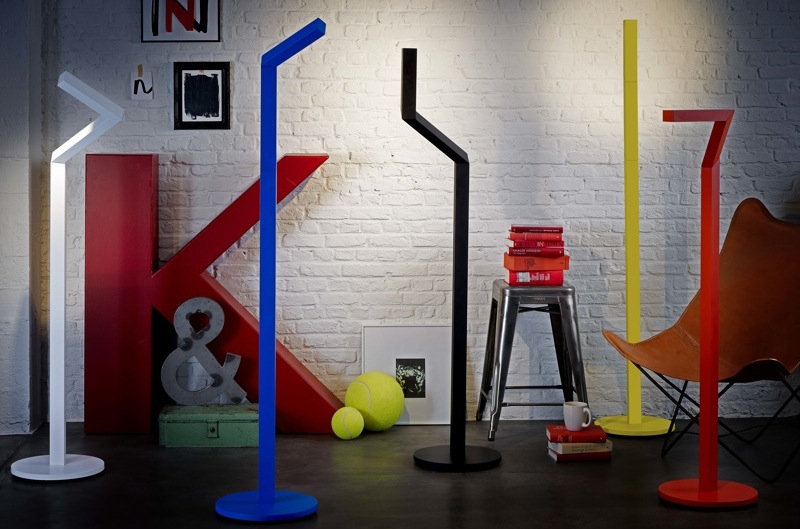Philips CEO: LED bulb prices must fall to 'well below $10'


FRANKFURT- Royal Philips Electronics CEO Frans van Houten said here earlier this week that the price of LED light bulbs in the consumer market must fall to "well below $10" if they are to catch on. As a step in that direction Philips is now launching a €9.99 bulb in Europe, he said.
"For the consumer, the tipping point of the price is much lower (than in the commercial market)," van Houten told me in response to one of several questions I asked him during a press conference at the Light + Building trade show. "So we need to get the products to a price point that it is attractive for them. This is still a little bit away. Now if you are after that one price point of that one bulb, I think you need to get it well below $10."
The company is now implementing a retail plan that should lead to €9.99 for a 32-watt equivalent LED bulb across Europe, added Nico Jonkers, general manager of LED lamps (a "lamp" is a "bulb" in Philips speak) for Philips Lighting.
The new pricing would take hold first in Germany this month, and should spread to the Nordic region, southern Europe and the Benelux countries by the third quarter, he said. Philips markets the bulb as a replacement for a 40-watt incandescent bulb, even though it emits a light level that's equivalent to what a 32-watt incandescent bulb would provide. The LED version requires only 7 watts, or about a fifth of the power required to operate a 32-watt incandescent.
It will be up to retailers whether they actually implement the €9.99 level. Jonkers told me that Philips is negotiating agreements that should make €9.99 possible. The same negotiations would lead to €14.99 for a 60-watt replacement, he said.
Neither of those prices meet van Houten's "well below $10" criteria. The lowest, €9.99 is over $13. Even if you equate €10 to $10 as a psychological consumer threshold, €9.99 doesn't equate to "well below" 10. Nor, obviously, does €14.99
Still, the price is moving down, as it needs to. The €9.99 announcement is the second shoe to drop following van Houten's declaration last January that Philips would cut LED bulb prices.
Consumers have balked at paying $25-to-$40 for a Philips bulb in the U.S, where they're accustomed to spending sometimes less than $1 for a conventional, energy-hogging incandescent bulb.
Industry LED prices have been declining, led in part by lesser known brands from China and elsewhere. Philips' €9.99 move marks at least the second announcement this month of an LED price cut by a well-known brand. U.S. manufacturer Cree last week said it is halving the price of LED streetlights.
Philips and other LED manufacturers argue that the "total cost of ownership" of an LED bulb justifies up front prices that are higher than conventional incandescents. They say that the consumer saves enormously on electricity - LEDs require only about 20 percent of the power of incandescent bulbs. Consumers will also rarely have to replace an LED bulb, because the bulbs can last for 25 years or more, the industry claims.
As valid as those arguments may be (we'll still have to wait a couple of decades to prove the 25-year lifetime), it's been tough convincing the average consumer to shell out 20 to 30 times the amount of money normally required to buy a bulb.
But according to van Houten, bulb buyers in the commercial market are going for LEDs. In some retail and service settings, bulbs burn all day long or even for 24 hours in, say a hotel lobby. So the maintenance savings gained from installing bulbs that last for 25,000 hours are compelling, he told me.
"For a professional user like in an office building, people take into account the initial price of the lamp, the energy saving costs, as well as the maintenance savings," van Houten said. "And that proposition typically already gives a you a total cost of ownership payback time of - depending on the energy cost - of one to two years. So for a building operator, it's highly attractive to already switch to LED lighting right now."
With pricing pressures on the bulbs, Philips Lighting is turning towards business models that rely less on bulb sales and more on other areas. For instance, the company is increasingly designing and selling its own lamps, or "luminaires" in Philips parlance. At Light + Building it introduced a stylish and multi-purpose LED floor lamp called the Nick-Knack.
It is also emphasizing commmercial and outdoor LED lighting. In one new business model, it is selling lighting as a service to municipalities and to highway agencies, in which the customer does not necessarily purchase hardware. Instead, the customer contracts Philips to operate, control and maintain lighting systems. I'll soon post more from van Houten and other Philips executives about these and other lighting developments - including a progress report on Philips OLED (organic light emitting diodes) initiative - in upcoming stories on SmartPlanet.
Keep an eye out for them, and thanks in advance for reading. Feel free to comment below.
Photos from Philips (van Houten from Philips via Flickr).
More LED slices on SmartPlanet:
- Cree: We've cut the cost of LED streetlights in half
- LEDs turn towering sow's ear into silk purse in Paris
- An LED bulb under $5
- Philips CEO: We'll cut prices on LED bulbs
- The dim light of LED profits: Philips CEO issues financial warning
- More LED truths and half-truths
- When good lights go bad: LED breakdown
- The hot and cold of LED lighting
This post was originally published on Smartplanet.com